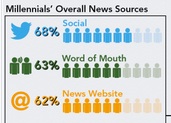A panel discussion with refugee advocates at Elon University today dived into the grueling roadblocks refugees and asylees face while living in the United States.
The panel was comprised of Elon University faculty member Mussa Idris of PERCS: Elon’s Program for Ethnographic Research & Community Studies, Heather Scavone of Elon’s Humanitarian Immigration Law Clinic and representatives Million Mekonnen and Sharon Morrison of the North Carolina African Services Coalition (NCASC) and Center for New North Carolinians (CNNC). Each speaker provided deep insight into their work with local refugees in North Carolina, specifically in Greensboro.
“Because they don’t speak much English, we don’t think they are very professional,” said Morrison, referencing Montagnard refugees.
Language is one of many barriers immigrants and refugees struggle with upon arrival to the United States. Although some may have a long list of credentials from their home country, these do not directly translate to being United States credentials. Additionally, if a refugee speaks in broken English, native Americans may believe them to be dumb.
Additional barriers include but are not limited to legal needs and challenges of asylees and refugees, family separation and healthcare.
Barrier number one: the law
Scavone said that it is the United States’ international and domestic obligation to protect the legal needs of immigrants, asylees and refugees. Under law, refugees may not be returned to a country where their life and their rights are threatened or violated based on an individual’s;
- race
- religion
- political opinion
- membership in a particular social group
- nationality
These are known as the five protected convention grounds. But some refugees have trouble dictating their situation back home. Not everyone has access to an attorney, and courts are three times less likely to approve of citizenship if there is an attorney vouching on behalf of a refugee. There is risk of deportation to an unstable life in their home state once again. It is pertinent to refugees to be granted citizenship in the United States. This is because citizenship translates to civic engagement, family reunification, permanent protection from deportation and preservation of social benefits.
Barrier number two: family separation
Scavone emphasized the “discomfort” that comes along with being separated from spouses and children and how it affects an overall transition to a refugee safety zone, like Greensboro, NC. Family unity encourages mental health, economic self-sustainability and a natural social integration. Being without family in a foreign country can be tough for many refugees, asylees and immigrants. One more reason to become a citizen: Upon being granted citizenship, a refugee has opportunity to bring spouses and children to the United States.
Barrier number three: healthcare
Medicaid opportunities are available within a limited timespan. During the first eight months of residence in the United States, refugees may collect all benefits given to citizens in the Affordable Healthcare Act. After this time, refugees must qualify for eligibility to receive medical insurance. When referring to refugees from all around the world, Mekonnen said many require medical assistance for long after this eight-month period. Refugees hailing from Somalia, Ethiopia, Afghanistan, Burma, Iran, Cuba and Syria may have post traumatic stress disorder as well as various diseases that need to be treated immediately and periodically. After eight months, a big issue for refugees is paying for and qualifying for medical insurance to treat these health issues.



